In the "Stromateis", written in the third century, Clement of Alexandria establishes a deeper analogy between the truth-Logos, coeternal and coextensive with God, and the cosmic aeon, aiȏn, which gathers in itself present, future and past: to the temporal scan , a typical expression of creation, the articulation of the parts of the cosmos is connected; thus "he who reassembles the different parts and reunites them will safely contemplate [...] the Logos in his perfection, that is, the truth".
di Claudius Capo
A common denominator of the great traditions of the past is the gnoseological and ontological research of the divine through the symbol. This, often and in the most varied forms, has been seen as revolving around an original principle placed outside the limits of the sensible, representing, at least on a symbolic level, the problem of knowledge of and about God. 'it was vulgar we witness the construction, by Clement of Alexandria (150 - 215), of a philosophical - rather than theological - structure that attempts to answer the much debated question about the nature of God and the methods of understanding man.
To move the Alexandrian's intentions is the attempt to systematize and harmonize the content of the common thought Tradition - understood in the Guénonian meaning of transcendent unity placed in the various traditions - which, rising from pre-Socratic wisdom, passing through the Neoplatonic readings, would strengthen itself in the figure of Christ the Logos. Clemente strongly believes - and the character of his compositions proves it - that in the subsoil of every tradition, which we could represent as the beating heart of these, there is a same matrix of a sapiential order. The obstruction of man's gaze towards this "similar concord" would be given by observing the character of traditions under a literary rather than a symbolic, dogmatic and indisputable rather than rational and understandable lens.
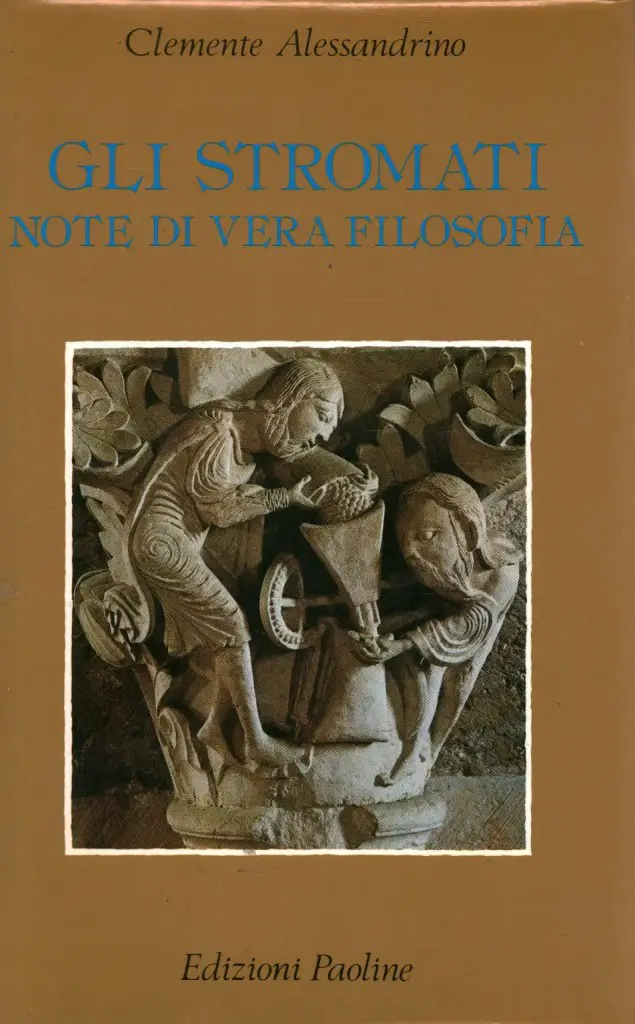
In this sense, the singular character of the Stromates (Stromateis) - third century text in which the Alexandrian philosopher will attempt to investigate the relationship between man and God with the interception of the Logos - it is that these require effort from those who intend to pick "the colorful blooming flowers in the meadow" [1], to approach the continuous riddles by addressing them rationally in order to be brought to the limits of area in the noumenal and see the truths that lie outside of this. The content of the text, expressed in a form that is located in the wake of a hybrid dialectic between orality and writing typical of the classical tradition, seems to open exclusively to a type of protrectic and philosophical approach, going so far as to suggest examining the Holy Scriptures in the light of a "Hidden meaning" which can be traced back through allegory and symbology. In a similar framework, therefore, the theme of "Secret tradition" - mentioned several times - in which the "Great mysteries". The distance between the Platonic doctrines and the teaching of Christ would be only apparent since we are dealing, in fact, with a different semantic discussion with which we intend to delineate the same knowledge of God and the world of Ideas.
In Clemente's eyes, the Johannine tradition, summarized tout court in the Prologue of the same apostle, he would have reached - and even surpassed - the discourse about the One and its entity reported in Parmenides by Plato. In the Logos that Plato associates with making the manifestation of thought through the voice or with the projection in a mirror or in the water of the image, to make a belief true [2], the face of the god would appear in a symbolic cipher. Christ, while maintaining his own earthly nature, would be, according to Clement, a manifestation in which the wisdom of the mysteries would be poured out. The Word, sung in the hymn that mentions the main themes of the Gospel of John, would correspond to the Platonic Logos as it clarifies how the earthly manifestation is a mirror image of the nature of the celestial worlds [3]:
and the Word [Logos] was with God
and the Word [Logos] was God.

The difference between the image of God and himself is the same as that between the one who, looking in the mirror, manages to grasp his own reflected face: apparent. However, this would not be enough to make God's nature evident, it would reveal itself to man to the extent that looking in the mirror, instead of himself, he would see the world reflected in it. Real understanding of God comes only after one progressive process of assimilation to the Logos that leads to eliminating the distance between the object contemplated by the subject of contemplation. However, even if the Logos Himself retains a contingent nature and intercedes into the world through it, it still remains the image of the principle ab origine without which the manifestation could not come into existence.
La follow Christ comes to represent the instrument in the Clementine doctrine par excellence with which to cross the "Narrow door" through which you will have a vision of the celestial worlds. In the same way, the One of Platonic doctrines - placing itself in terms of absolute unity - places itself beyond the phenomenon but comes into contact with this by making itself knowable through rational laws: the Platonic logos - similar to that imagined by Clemente - it is rationality immanent to reality and, at the same time, knowledge of this in the form of dialogue or ideas. Therefore the One is neither enunciable nor understandable nor from we nor since noeton were it not for the Logos made manifest and placed on a plane of exact ontological parity. The gaze is shifted from "distant things" to "closer" ones since, being reflected to each other to the extent that they both participate in the same reality of which they are an indistinct expression [4].
The path to go up theaperion and scrutinizing existence beyond the sedimentations of matter consists, therefore, inhomoiosis theo - becoming like the gods so dear to the Delphic precepts. The will of conjunction between man and the Logos matured by the awareness acquired during the attempt to lead oneself to the limits of reason to which border area the human condition appears neat and clear as an image (kat'eikona) of God. Therefore the world of manifestation of phenomena constitutes a continuum that man is called to travel in order to grasp the deepest essence of creation as well as the symbol of the original principle. The Logos is therefore defined as an image and knowable expression of God without which the multiple articulations of creation would be split, separated and inaccessible to their most hidden nature.
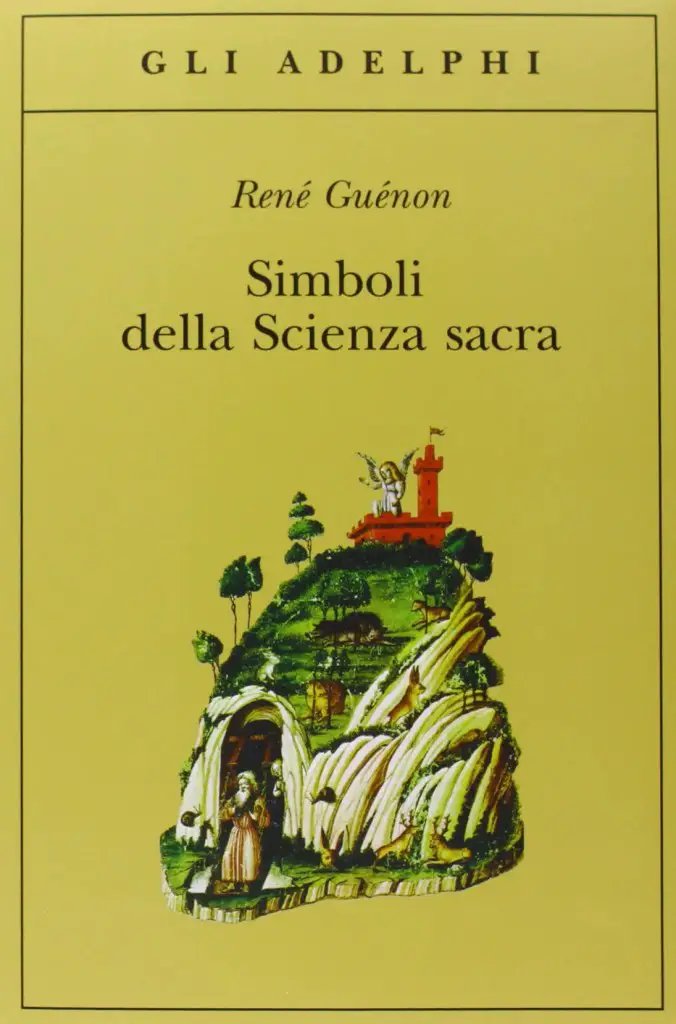
The importance of the symbol in the Tradition is also highlighted by Guenon when, speaking of the Word and the Symbol, he affirms that all that is, in whatever form it is found, having its principle in the divine Intellect, translates or represents this principle according to its manner and according to its order of existence. That's right all things are concatenated and correspond to each other to contribute to universal and total harmony, of which they are a reflection of the divine Unity itself; this correspondence would be for Guénon himself the true foundation of the symbol, of the Logos where, precisely because of this profound correspondence, they would find themselves both as a beginning and as an end [5].
Returning to Clement: “Greeks and barbarians still participate in the Logos of truth”. Clemente institutes a deeper analogy between truth-Logos, co-eternal and coextensive with God, and the cosmic aeon, aiȏn, which gathers in itself present, future and past: the articulation of the parts (mere) of the cosmos; Like this "one who it will recompose the different parts and reunify them, he will safely contemplate, let us be sure of the Logos in its perfection, that is, the truth " [6].
In other words, Clement tries to sew together the fate of man with those of God to the extent that everything belongs to one God - man would represent the reflective consciousness of this - and there is no one whose nature is totally foreign. to the world, since one is the substance of which all things participate [7]. It follows, therefore, an overall and unitary representation of reality, the original unity of the cosmos and its reintegration into the consciousness of man would take place through an act of contemplation or, if you prefer, enlightenment in the Christian sense. Precisely in this regard, the symbolic method with which Clemente advances in Stromates it represents the best tool of cognition that would allow to combine the different aspects of reality. Once again, to legitimize his gaze on the world, Clement relies on the pre-Socratic masters by taking up a famous fragment of the Dark of Ephesus which makes it explicit how the god manifests himself through the mysteries [8]
The Lord who has the oracle in Delphi does not say and does not hide, but hints.
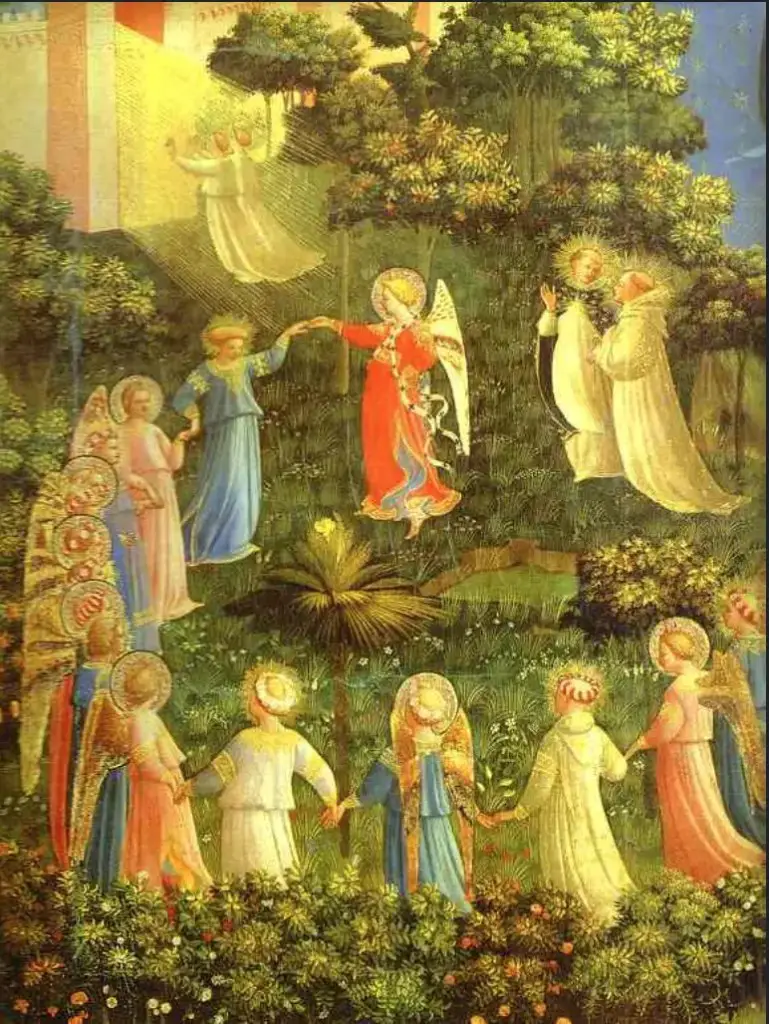
We recall how the revelation of the gods to man for Greek wisdom occurs exclusively through the enigma. Giorgio Colli remember it The birth of philosophy the Aristotelian elaboration according to which the enigma is the formulation of a rational impossibility which nevertheless expresses a real object, or knowledge. The wise man - in harmony with what Clemente argued - dominates reason and solves the enigma. This, however, when he enters the competition of wisdom he must take on a contradictory form [9], thus becoming inaccessible to reason as implying a diametrically opposite and mutually excluding principle. Essentially, the enigma is solved through reason but its understanding is not attainable through this. The contradiction would therefore be raised to protect the mysteries, protection from those who want to understand them with logic and reason and not with a contemplative act., of faith in the Christian case: what is more contradictory than resolving the duality Logos / God in the One?
It was the Greek philosophers who were the first, in the period of Hellenic classicism, to propose an interpretation of the mythical tales narrated by those who, lived in communion with wisdom, preceded philosophy. In the pre-Socratic myths there was the intent to pass on the vision of the celestial realms under a deeper philosophical and sapiential meaning to all those who would have had the courage to face the "Revelations of Silenus". The myths transposed on each individual figure an event that took place cyclically on a different and higher plane of existence. [10]:
In short, all, so to speak, those who dealt with divine things always kept the explanation of the principles of reality hidden and handed down the truth through representations and symbols, allegories and metaphors, and other procedures similar to those in which the Greek oracles are expressed: After all, Apollo Pizio is called "Tortuoso". And indeed even the sentences of those whom the Greeks call "Wise" want to mean a greater reality in a few words. For example […] the other motto "Know yourself" wants to indicate many things: [...] know what you were born for, whose image you are, and what your essence is and how you were created, what your affinity with God, and other similar things.
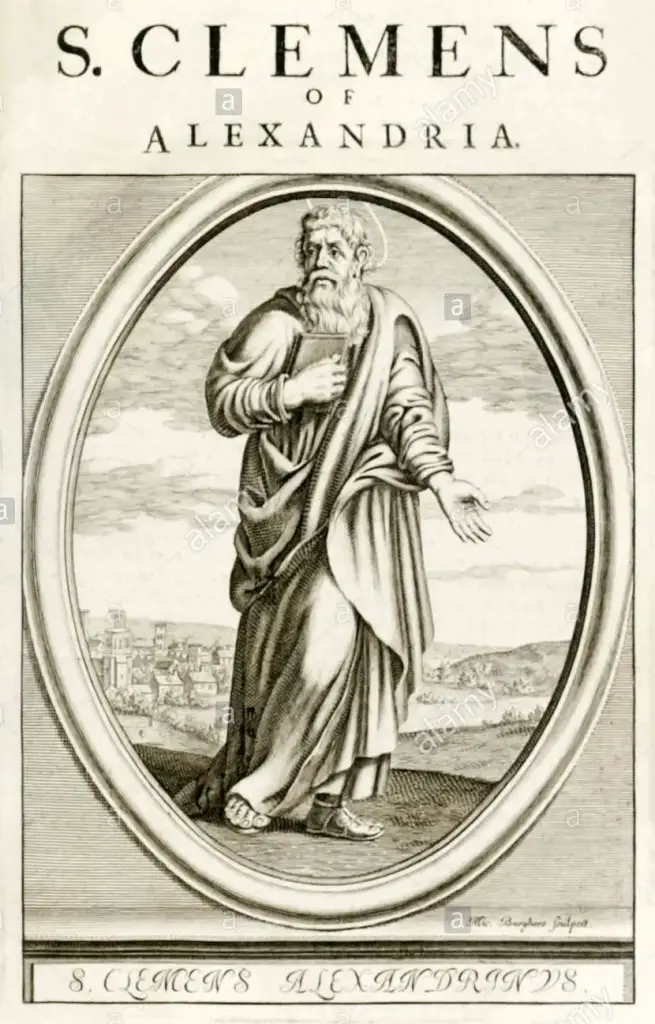
In conclusion, at a deeper level for Clemente the value of the symbol is given by its coincidence with the thought of the Tradition which would not depart from it even if "changing dress". The Alexandrian sees in nature a condition that at the same time hints at and hides the truth. To grasp the "forbidden fruit", the Logos, it is necessary to reconnect the various fragments by virtue of an interpretation of the real which coincides with the symbolic one. If reality consists in the line of succession branched off by an uncreated principle, man cannot be denied the possibility of passing from external manifestations to progressive perceptions of the intimate unity of existence.
Definitely the Clementine philosophical system starts from the conception of kosmos and Zoe which, present in all living beings, are progressively transformed, thanks to the act of contemplation, into a spiritual reality to which man allows himself, as mirror images of God. Man is a fragment of this image which he is called to expand to the extent of communion with the divine through a progressive process of assimilation. There Christ theophagy described in the Gospels where the Redeemer breaks the bread and pours wine to the disciples inviting them to eat their own flesh and drink their own blood [11] would represent, as well as the Orphic myth of Dionysus Zagreus which is accompanied by the rite of tearing the bull as a hierophany of the god, un attempt to devour the world and join the divine.
Therefore, Colli always reminds us how the myth of Dionysus torn to pieces by the Titans it is an allusion to the metaphysical heterogeneity between the world of multiplicity and the world of divine unity, just as the double nature of Apollo would represent a fracture between the world of men and that of the gods to be strengthened through the Logos-Word [12]. All creation in its dual components of visible and invisible, sensitive and intelligible and so on, constitutes a unity which, given the carnal condition of man, is accessed only through the symbol to the extent that this is seen as a "Stele di Rosetta "for translating the language of God and making oneself like the gods - or the principles underlying the One.
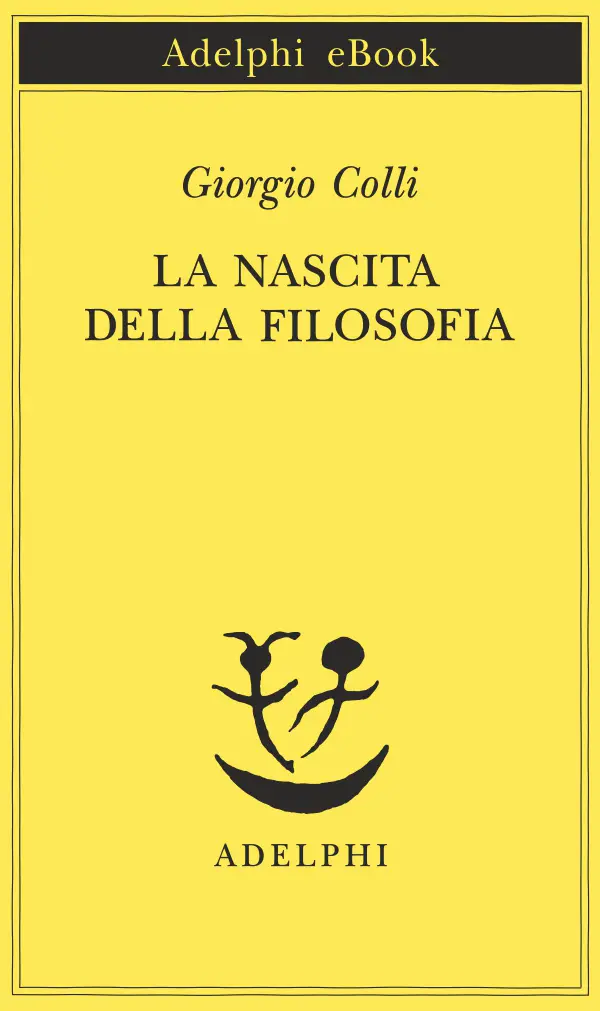
Note:
[1] Stromates VI, 2, 1.
[2] Plato, Theaetus, 206D.
[3] Jn, Prologue, 1,1.
[4] Parmenides, Fr. 28B4.
[5] R. Guénon, Symbols of Sacred Science, Adelphi, Milan 1975, p. 22.
[6] The Stromates, Introduction by M. Rizzi, p. XXX.
[7] Ibid, IV, 165, 4.
[8] Heraclitus, fr. 66.
[9] G. Colli, The Birth of Philosophy, Adelphi, Milan 1975, p. 62.
[10] Stromates V, 22,23-1.
[11] Mt 26, 26.
[12] G. Colli, op. cit., p. 40.

2 comments on “The Logos and the knowledge of God in Clement of Alexandria's Neoplatonism"